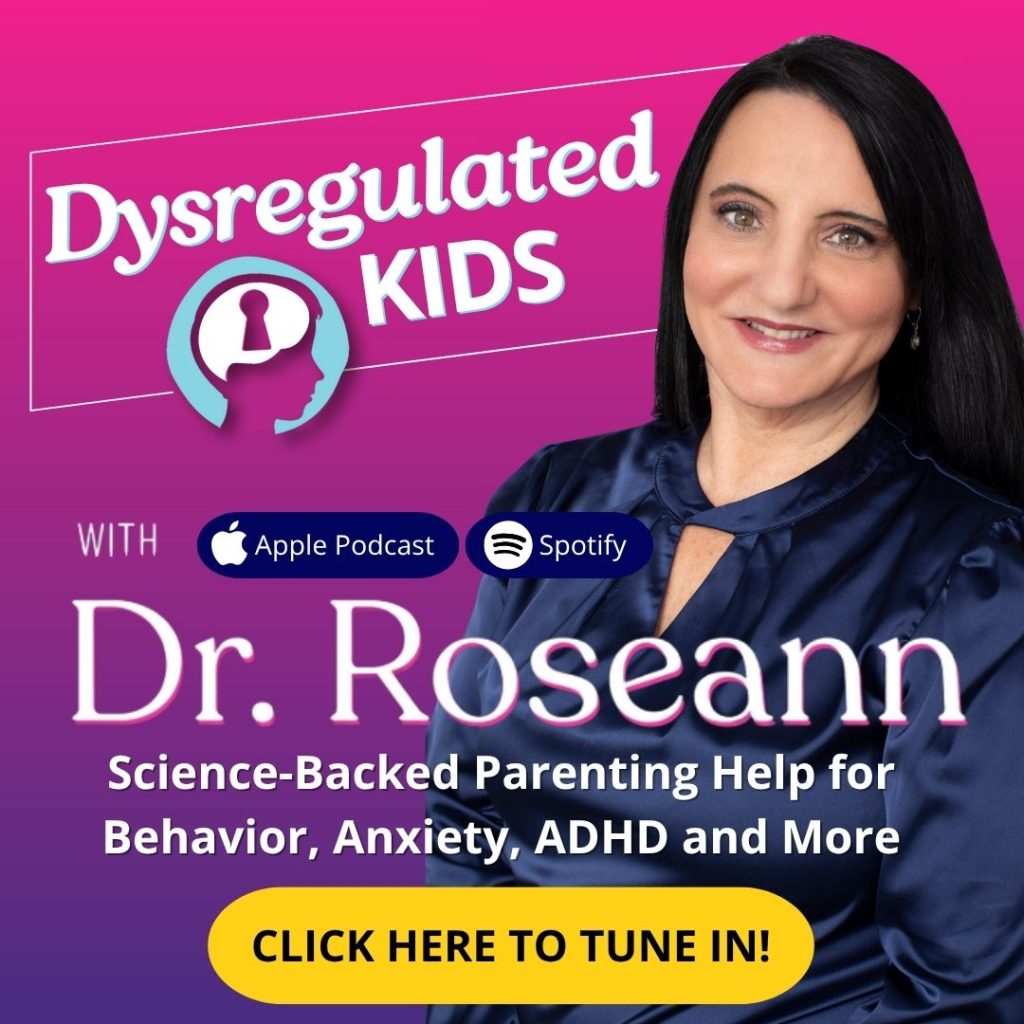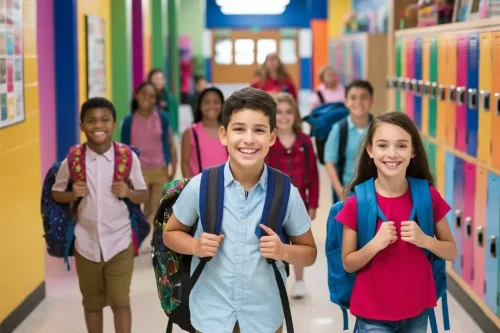Estimated reading time: 8 minutes
Morning chaos, homework battles, and constant reminders don’t mean you’re a “bad” parent. They signal a dysregulated brain that needs calm before change.
If your child’s behavior feels bigger than your toolkit, you’re not alone. The problem isn’t “willpower”—it’s nervous system dysregulation that makes attention, impulses, and emotions hard to manage.
When we calm the brain first, kids think, listen, and cooperate better. Below are compassionate, ADHD parenting strategies you can use today to help your child with ADHD at home and school—plus where non-medication options fit.
What ADHD Means For Your Child
ADHD is a neurodevelopmental condition, not a character flaw. It affects the brain’s ability to manage attention, impulse control, and self-regulation — the very skills that help kids pause, plan, and follow through.
Many children with ADHD swing between under- and over-stimulation. They might fidget, blurt, or move constantly one moment, then “zone out” or lose focus the next. These shifts aren’t defiance — they’re signs of an overwhelmed nervous system trying to find balance. As Dr. Russell Barkley explains, “ADHD is fundamentally a disorder of self-regulation.”
When we see behavior as communication, we can meet our kids with empathy, calm their brains first, and teach the regulation skills they need to thrive.
Parent story:
David, age 5: His teacher told Mom (Martina), “He can’t keep his hands to himself.” Once we added quick movement jobs (deliver the attendance folder), co-regulation (soft voice + slow exhale), and a First…Then… visual, the grabbing dropped, and spontaneous praise went up.
Try this:
- Name the state: “Your brain’s moving fast—let’s slow it down together.”
- Match a tool to the state: cold water sip, wall push-ups, or 4-4-6
- Give one step only: short, clear, doable.

Why Parenting An ADHD Child Feels Exhausting
This is because you’re constantly compensating for ADHD executive functioning gaps—working memory, time-blindness, and task initiation.
It means you’re constantly reminding, rescuing, and refereeing, which leads to burnout. A regulation-first lens plus scaffolds reduces parent stress and child resistance (Barkley, 2015).
Parent story:
Regina, mom of a 10-year-old: “If I don’t stand over him, nothing gets done.” We replaced nagging with supports: a picture checklist, a visual timer, and a Done Bin for finished tasks. In two weeks, homework completion rose and arguments fell.
Doable Resets
- Externalize memory: whiteboard, checklists, “pack-your-bag” photo card.
- Time anchors: same start times daily; use a visual timer, not your voice.
- One ask + timer: state it once, press start, praise the attempt.
- Bold takeaway: You’re not failing—your tools were missing the regulation step.
What to Say and Stop Staying
Language can dysregulate or regulate. Switch shame for coaching; this builds ADHD listening skills and confidence (Barkley, 2015).
| What NOT to Say | What TO Say Instead |
|---|---|
| Why can’t you just focus? | Let’s make this easier—first step is… |
| You’re being lazy | Your brain’s tired—quick reset, then we’ll try again. |
| You never listen. | I need your eyes. Ready for a short direction? |
Micro-script (save this)
- Connect: “Hand on heart—breathe with me.”
- Cue: “I’ll give one short instruction. Ready?”
- Direct: “Shoes on, backpack to the door.”
- Reinforce: “You started right away—high five.”
How To Help Your ADHD Child Listen Without Yelling
Kids listen and learn best when their nervous system feels safe and settled. That’s why instructions should be tiny, clear, and delivered after regulation — not during chaos.
My signature framework, Regulate → Connect → Correct™, follows this exact path: first calm the brain, then connect emotionally, and only then correct or coach the behavior.
Research supports this layered approach. As Jensen et al. (2007) noted, “Behavioral strategies are essential components of effective management.” When behavior tools are built on a foundation of regulation, the results aren’t just quicker — they’re more consistent and long-lasting.
Five-Step Listening Game
- Regulate first: 30 seconds slow exhale or wall push-ups.
- Gain attention: say the child’s name, pause for eye contact.
- Preview: “One instruction—are you ready?” (wait for “yes”).
- Deliver micro-direction: 7–10 words max.
- Reinforce effort: “You shifted fast—nice start.”
How to Support Your Moody ADHD Teen
Adolescence ups the emotional volume. Expect irritability, rejection sensitivity, and sleep shifts. Meet mood with validation + structure + co-regulation; these are core components of effective nonpharmacological care (Jensen et al., 2007).
Parent story — Martina, mom of a 15-year-old: Snark spiked after 10 p.m. We set tech-off 9 p.m., lights-out 10 p.m., added magnesium-rich foods, and a 15-minute walk. Two weeks later, fewer clashes and easier mornings.
Teen-smart moves:
- Validate first: “Makes sense you’re upset.” Then problem-solve.
- Negotiate routines: co-create school-night boundaries you’ll keep.
- Co-regulate: lower your voice, lengthen exhale; teens borrow your calm.
Evidence-based Options That Exist Beyond Medication
Medication can help some kids, but many families prefer non-medication ADHD treatments and ADHD natural solutions first. Or want to combine approaches.
A large meta-analysis found strong evidence for behavioral therapy and psychological interventions. It also showed that ADHD dietary strategies — such as elimination diets and specific nutrient support — can provide real benefits for certain children (Sonuga-Barke et al., 2013).
As the study concluded, “Dietary and psychological interventions can produce clinically meaningful improvements for some children.”
This means that ADHD natural treatments like diet changes, stress reduction, and behavior therapy may help reduce symptoms and improve daily functioning — especially when paired with a regulation-first plan that calms the brain before layering on strategies.
Brain-based options we use clinically:
- Neurofeedback: computer-guided brain training that supports sustained attention.
- Calming sensory input: brief movement, temperature change, or PEMF to reset the system.
- Executive functioning coaching: externalize planning; build realistic routines.
Does Exercise Really Help Attention and Executive Functioning?
Yes. Movement is a fast-acting regulation tool and supports executive functioning and on-task behavior. In clinical practice and parent-training literature, structured activity is a recommended adjunct for daily attention and mood (Barkley, 2015).
Movement prescriptions (real ADHD child focus tips)
- Before homework: 10–15 minutes brisk movement (bike, jump rope, stairs).
- During work: every 20 minutes, 60-second reset (wall push-ups, stretch).
- School day: request brief sensory breaks to prevent overload.
How To Boost Focus at Home and Get ADHD School Support?
Build systems, not speeches—this is the heart of durable ADHD school support. And pair structure with positive reinforcement for best results (Jensen et al., 2007).
At Home (quick wins)
- Task chunking: break work into tiny pieces; timer for each chunk.
- Visual workflow: <u>First… Then…</u> strip and a Done Bin for finished work.
- Low-friction space: clear desk, labeled bins, noise-reducing headphones.
At School (partner up)
- Accommodation menu: preferential seating, notes provided, extra time, sensory breaks, movement jobs, and clear rubrics.
- Check-ins: brief morning prime and end-of-day review; weekly “wins + next step.”
Parent story — Sarah: When she stopped rescuing and leaned on a checklist + timer, her son began initiating on his own.
Bold takeaway: Remove friction, add structure, and independence grows.
Turning Chaos Into Calm
When you help child with ADHD by calming the brain first, the constant battles start to shift into moments of connection. Listening, learning, and cooperation all become easier once regulation precedes correction.
Don’t feel like you have to change everything at once—start with one micro-shift today: a breathing reset, a visual checklist, or a 10-minute movement burst. These small wins build momentum.
Always come back to the sequence that works: Regulate. Connect. Correct.™ Because behavior isn’t defiance—it’s communication from a brain that needs support.
And remember: you’re not alone, your child isn’t broken, and it really is gonna be OK.
FAQs
Is ADHD caused by bad parenting?
No. ADHD is neurodevelopmental. Parenting doesn’t cause it; aligned ADHD parenting support (co-regulation, routines, reinforcement) reduces daily stress (Barkley, 2015).
Will my child outgrow ADHD?
Symptoms evolve with age, but tendencies persist. Skills, structures, and supports help kids succeed into adulthood (Jensen et al., 2007).
What diet helps most?
Start simple: protein at breakfast, produce, hydration, fewer ultra-processed foods; discuss omega-3 options with your provider (Sonuga-Barke et al., 2013).
Is neurofeedback safe?
Neurofeedback has been used for decades with a favorable safety profile; talk with a qualified provider to see if it fits your child (Barkley, 2015).
Citations
Barkley, R. A. (2015). Attention-deficit hyperactivity disorder: A handbook for diagnosis and treatment (4th ed.). New York: Guilford Press. https://www.guilford.com/books/Attention-Deficit-Hyperactivity-Disorder/Russell-Barkley/9781462517725
Jensen, P. S., Arnold, L. E., Swanson, J. M., Vitiello, B., Abikoff, H. B., Greenhill, L. L., Hechtman, L., … Hur, K. (2007). 3-year follow-up of the NIMH MTA study. Journal of the American Academy of Child & Adolescent Psychiatry, 46(8), 989–1002.
https://doi.org/10.1097/CHI.0b013e3180686d48
Sonuga-Barke, E. J. S., Brandeis, D., Cortese, S., Daley, D., Ferrin, M., Holtmann, M., Stevenson, J., … Sergeant, J. (2013). Nonpharmacological interventions for ADHD: Systematic review and meta-analyses of randomized controlled trials. American Journal of Psychiatry, 170(3), 275–289.
https://doi.org/10.1176/appi.ajp.2012.12070991
Always remember… “Calm Brain, Happy Family™”
Disclaimer: This article is not intended to give health advice, and it is recommended to consult with a physician before beginning any new wellness regimen. The effectiveness of diagnosis and treatment varies by patient and condition. Dr. Roseann Capanna-Hodge, LLC, does not guarantee specific results.
Are you looking for SOLUTIONS for your struggling child or teen?
Dr. Roseann and her team are all about science-backed solutions, so you are in the right place!
©Roseann Capanna-Hodge











